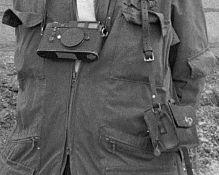Just as a carpenter has more than one saw or more than one hammer for different purposes, it is logical for a photographer to have more than one camera.
Really? Why?
I ask because although I have more than one type of 35 mm camera (SLR with interchangeable lens, rangefinder with fixed lens, viewfinder with fixed lens, AF point-and-shoot with fixed lens) the SLR does all I need. The others stay home. In 35 mm, SLRs are as close to universal cameras as we have.
I went up in format to 2x3 because I couldn't get the images I wanted -- basically flowers in their settings with adequate fine detail in the flowers, this is impossible with 35 mm still, the format's too small -- with 35 mm. I went to 2x3 press cameras, cheap and cheerful Graphics. I have 6x6 and 6x9 fixed lens pocketable (they say) folders in the closet. They have no advantages over my Graphics except less size and weight and that isn't enough. I also have a couple of 2x3 monorails, one with a 4x5 rear standard so that I can shoot 6x12. I shoot the Graphics and monorails from tripod, focus on the GG, and don't often use much in the way of movements. The monorail with a 4x5 rear standard has advantages over the Graphics. It can shoot 2x3 and 6x12 and it can use longer lenses than the Graphics can.
As far as I know there are no good equivalents to 35 mm SLRs for formats 2x3 and larger. Yes, I know, Arca Swiss Reflex, Graflexes, Mentor Reflex, Plaubel Makiflex and Pecoflex and lotsa ancient SLRs that are much like Graflexes. None syncs electronic flash, very few have automatic diaphragm, all are slow-working. In fact I have a 2x3 Graflex modified to function as an SLR module on my 2x3 monorails. Wrong camera for that job, its mirrorbox is rectangular and vignettes badly with the long lenses I hoped to use with it. Makiflex, perhaps, but still without the 35 mm SLR's advantages.
I have no need to go to a larger format.
I'm surprised you didn't mention formats larger than 4x5.











 .
. 
